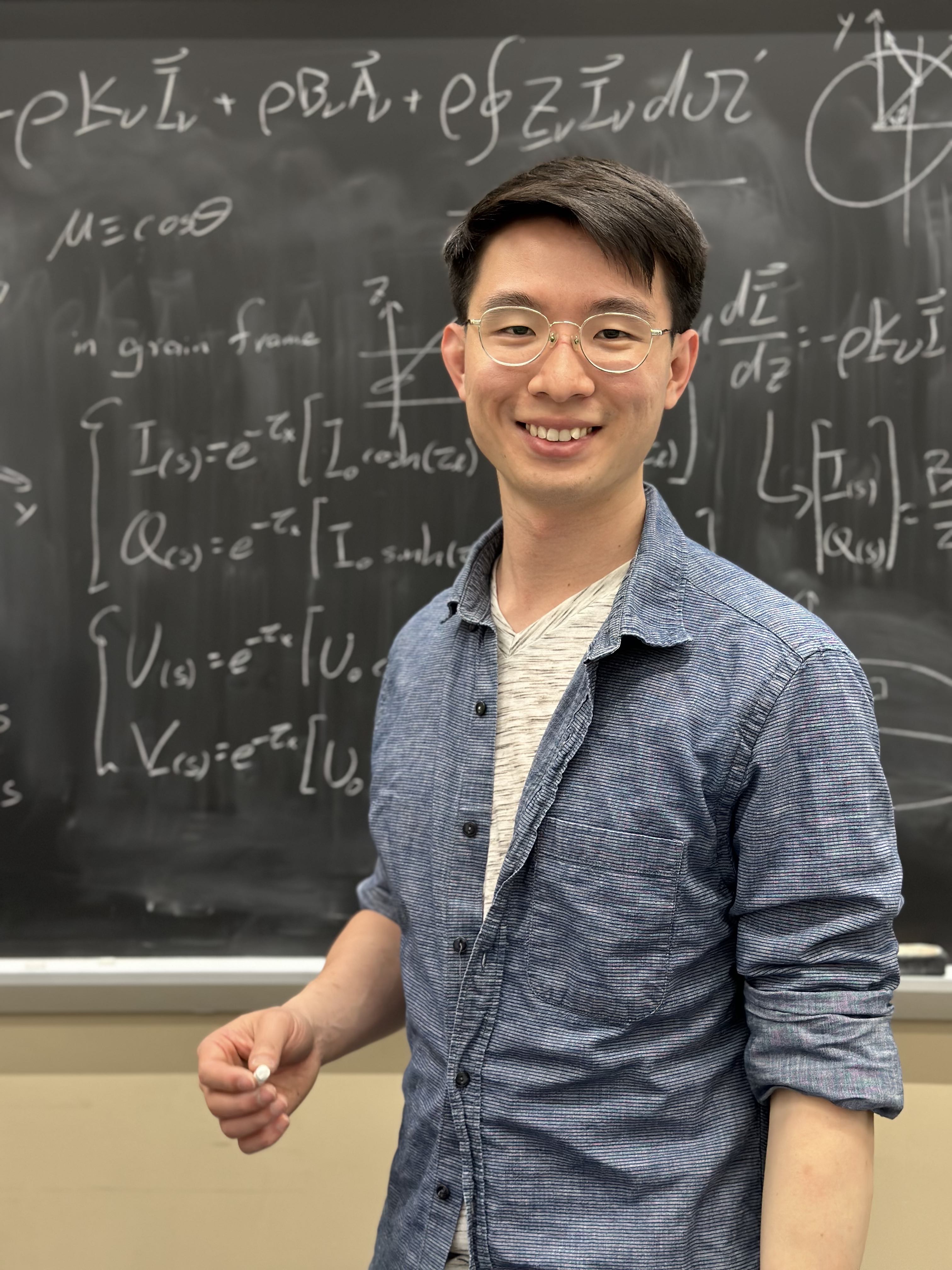Welcome! 歡迎! Huan-gîng--ooh!
I am a postdoctoral researcher at Carnegie Science working with Dr. Alycia Weinberger. My work focuses on understanding the behavior and properties of dust in the crucial early stages of planet formation. Through observations and theoretical modeling, I investigate the processes that transform interstellar dust into the building blocks of planets.
I received my Ph.D. in Astronomy from the University of Virginia in 2024, where I worked with Prof. Zhi-Yun Li and Dr. John Tobin. Prior to my graduate studies, I earned my B.S. in Physics from National Chung Cheng University (中正大學) and worked at Academia Sinica Institute of Astronomy and Astrophysics as a research assistant with Dr. Hsi-Wei Yen (顏士韋) and Dr. Chin-Fei Lee (李景輝).
My research utilizes cutting-edge observational techniques, including high-resolution imaging and polarimetry using ALMA, coupled with advanced computational methods such as 3D Monte Carlo radiation transfer simulations. I am passionate about unraveling the complexities of dust evolution in diverse astrophysical environments and its implications for planet formation.
As an early-career scientist, I am eager to contribute to our understanding of how planetary systems form and evolve. Learn more about what I do below! I am always open to collaborations and discussions with fellow researchers in the fields of planet formation, circumstellar disks, and related areas of astrophysics.
我是卡內基科學院(Carnegie Science)的博士後研究員,目前與 Alycia Weinberger 博士合作。我的研究重點是了解行星形成關鍵早期階段中塵埃的行為和特性。透過觀察和理論模型,我研究將星際塵埃轉化為行星構建基塊的過程。
我於2024年在維吉尼亞大學(University of Virginia)拿到天文學博士學位,師從 Zhi-Yun Li 教授和 John Tobin 博士。當研究生之前,我在國立中正大學獲得物理學學士學位,並在中央研究院天文及天文物理研究所擔任顏士韋博士和李景輝博士的研究助理。
我的研究利用頂尖的觀測技術,包括使用ALMA進行高解析度成像和偏振測量,結合先進的計算方法,如三維蒙特卡洛輻射轉移模擬。我熱衷於揭示各種天文物理環境中塵埃演化的複雜性及其對行星形成的影響。
作為一名剛起步的科學家,我積極為我們理解行星系統如何形成和演化做出貢獻。歡迎由下方了解更多關於我的工作!我一向樂於與行星形成、原行星盤以及相關天文物理領域的研究者進行合作與討論。
Guá sī Carnegie Science ê phok-sū-aū gián-kiù-uân, kah Alycia WEINBERGER kho-ha̍k-ka ha̍p-tsok. Guá ê gián-kiù tiōng-tiám sī liáu-kái kiânn-tshenn hîng-sîng tsá-kî ê tîn-ia ê kiânn-ta̍h kah ti̍k-sìng. Thàu-kuè kuan-tshik tsham lí-lūn bôo-hîng, guá gián-kiú àn-tsuánn kā sing-tsè tîn-ia tsuán-huà sîng kiânn-tshenn ki-tè ê kuè-tîng.
2024 nî sî, guá tī Ui-tsí-ni-a Tāi-hàk (University of Virginia) tit-tio̍h thinn-bûn phok-sū ha̍k-uī, tuè LI Zhi-Yun kàu-siū kah John TOBIN phok-sū ha̍k-si̍p. Tsiânn-tsò gián-kiù-sing tsìn-tsîng, guá tī Kok-li̍p Tiong-tsìng Tāi-hàk (國立中正大學) tit-tio̍h bu̍t-lí-ha̍k ha̍k-ūi, koh tī Tiong-ng Gián-kiù-īnn kah Thinn-bûn-bu̍t-lí Gián-kiù-sóo (中央研究院天文及天文物理研究所) tam-jīm YEN Hsi-Wei (顏士韋) phok-sū kah LEE Chin-Fei (李景輝) phok-sū ê gián-kiù tsōo-lí.
Guá ê gián-kiù ūn-iōng tíng-tsiam ê kuan-tshik kang-hu, kânn sú-iōng ALMA tsìn-hîng kuân kak-hun-piān-lu̍t sîng-siōng kah phian-tín-kng, kap sian-tsìn kè-sǹg hong-huat, pí-lūn sann-uî Monte Carlo hok-siā tsuán-î bôo-gí. Guá lóo-li̍k kiat-sī tsióng-tsióng thinn-bûn-bu̍t-lí khuân-kíng tiong tîn-ia ián-huà ê ho̍k-tsa̍p kah tuì kiânn-tshenn hîng-sîng ê íng-hióng.
Kín-lâi khuànn ē-kha khah tsē iú-kuan-tio̍h guá ê khang-khuè! Guá huann-hí-lâi kah pa̍t ê gián-kiù-uân ha̍p-tsok koh thó-lūn kiânn-tshenn hîng-sîng, guân-kiânn-tshenn-puânn, kah siong-kan ê thinn-bûn-bu̍t-lí.

